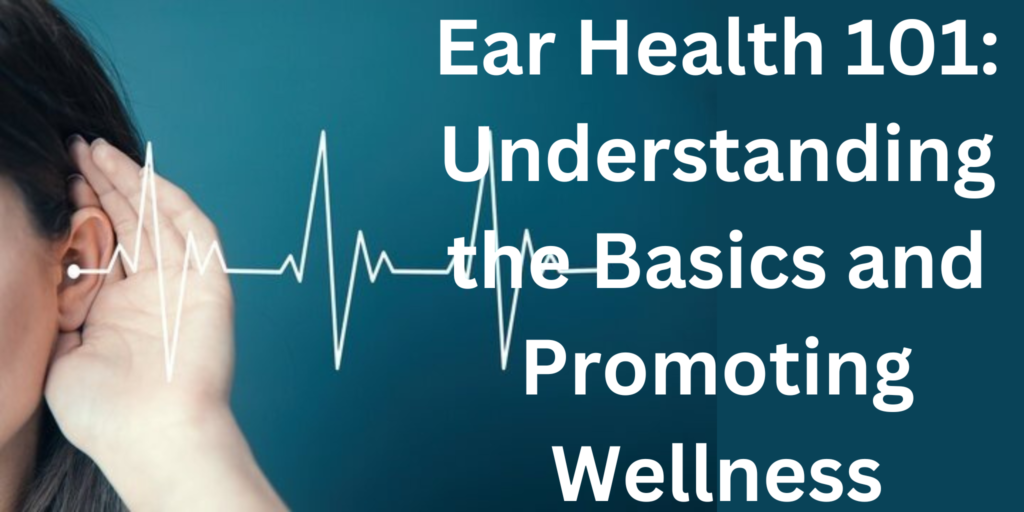
Our ears are remarkable sensory organs that play a vital role in our daily lives. From hearing beautiful music to engaging in conversations, our ears are our gateway to the auditory world. To ensure that our ears function optimally, it’s crucial to understand the basics of ear health and how to promote wellness. In this comprehensive guide, we’ll explore the intricacies of ear health, common issues, and practical tips to maintain good ear health.
Section 1: The Anatomy of the Ear
Before delving into ear health, let’s take a closer look at the intricate anatomy of the ear. The ear can be divided into three main parts:
The Outer Ear
The outer ear consists of the visible part of the ear, known as the pinna, and the ear canal. The pinna captures sound waves and funnels them into the ear canal, leading to the eardrum.
The Middle Ear
The middle ear contains the eardrum, which vibrates when sound waves hit it. These vibrations are transmitted to the three tiny bones in the middle ear, the hammer, anvil, and stirrup. These bones amplify the sound before passing it to the inner ear.
The Inner Ear
The inner ear houses the cochlea, a spiral-shaped organ filled with fluid and thousands of tiny hair cells. These hair cells convert sound vibrations into electrical signals, which are then sent to the brain for processing.
Understanding the ear’s anatomy is essential for comprehending the processes involved in hearing and maintaining ear health.
Section 2: Common Ear Health Issues
To take good care of our ears, it’s important to be aware of common ear health issues and their causes. Some prevalent problems include:
1. Ear Infections
Ear infections can affect individuals of all ages. They are often caused by bacteria or viruses and can lead to pain, fever, and temporary hearing loss.
2. Tinnitus
Tinnitus is characterized by a constant ringing or buzzing in the ears. It can be caused by exposure to loud noise, age-related hearing loss, or underlying health conditions.
3. Wax Buildup
Earwax is a natural substance produced by the ear to protect it from dust and debris. However, excessive wax buildup can cause discomfort and affect hearing.
4. Hearing Loss
Hearing loss can be a result of various factors, including genetics, aging, exposure to loud noises, and certain medical conditions.
Understanding these issues and their causes can help in early detection and prevention.
Section 3: Tips for Promoting Ear Health
Maintaining good ear health is essential for a high quality of life. Here are some tips to help you keep your ears in top shape:
1. Protect Your Ears
Wearing ear protection, such as earplugs or earmuffs, in noisy environments or when exposed to loud music can prevent hearing damage.
2. Keep Ears Clean
Gently clean your ears with a washcloth, but avoid using cotton swabs, as they can push earwax deeper into the ear canal.
3. Avoid Inserting Objects
Never insert foreign objects like cotton swabs or bobby pins into your ear canal. This can damage the delicate structures inside.
4. Get Regular Check-ups
Routine check-ups with an audiologist can help detect and address ear health issues early.
5. Monitor Your Hearing
Pay attention to changes in your hearing and seek professional advice if you notice any problems.
Conclusion
Ear health is a crucial aspect of overall well-being. By understanding the anatomy of the ear, recognizing common ear health issues, and following simple tips for promoting ear health, you can ensure that your ears serve you well throughout your life. Remember, taking proactive steps to protect and maintain your ear health will lead to a better quality of life and richer auditory experiences.
